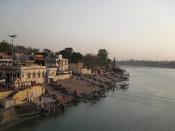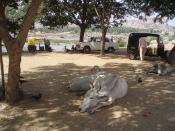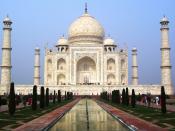Ethnic and Cultural Groups
India's population is rich with diverse ethnic and cultural groups. Ethnic groups are based on a sense of common ancestry, while cultural groups can be either made up of people of different ethnic groups who share a common language, or of ethnic groups with some customs and beliefs in common. The various ethnic and cultural groups of the people on India are shared by the other peoples of the Indian subcontinent, including the peoples of Pakistan, Bangladesh, Nepal, Bhutan, and Sri Lanka.
The majority of India's population share the same physical characteristics. There is no evidence of racial differences within this majority, although there are ethnic and cultural differences, such as language and religion. In physical appearance, Indians have brown skin of many shades, mainly straight black hair, and, mostly, brown eyes. Other physical characteristics, such as nose shape, in most cases do not tell apart one group from another.
People of different regions are different from others in skin shade and height, but the extend beyond is great.
There are also groups of people in India that have been identified by the government as tribal, meaning they belong to one of the more than 300 "scheduled tribes." The tribal people are sometimes called hill tribes or adivasis ("original inhabitants") and in 1991 made up about 8% (more than 65 million people) of India's population. Members of India's various hill tribes are thought to be indigenous and tend to be ethnically distinctive. These groups typically marry within their community and often live in large, bordering areas, which are preserved by government policies restricting the sale of land to tribe members.
Major tribes include the Gond and the Bhil. Most other tribes are much smaller, with tens of thousands of members. Very few tribal communities now support...


